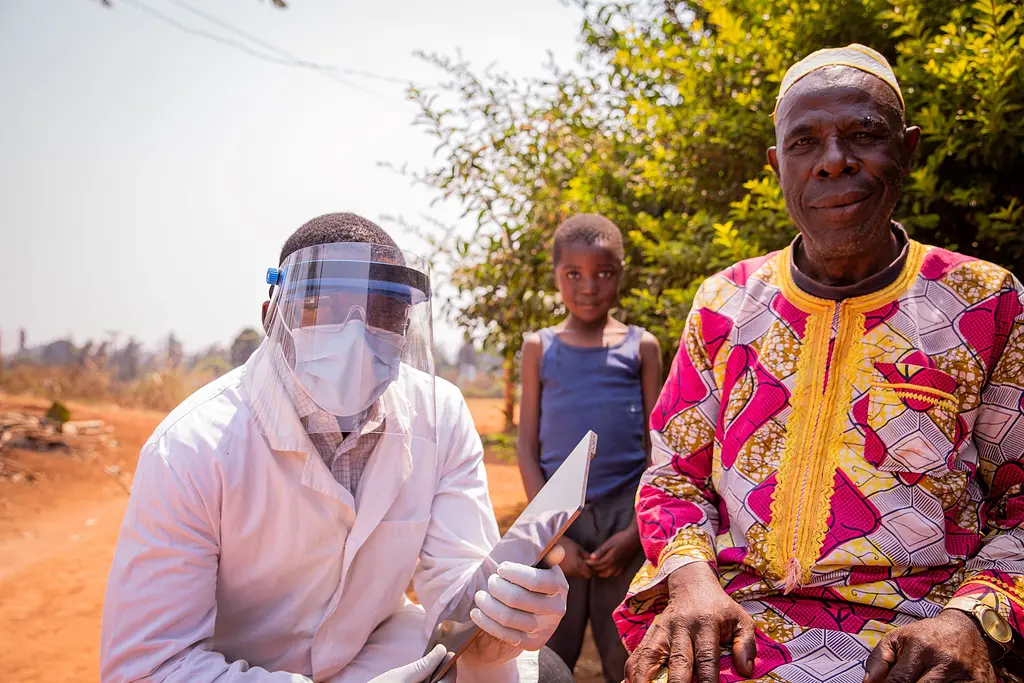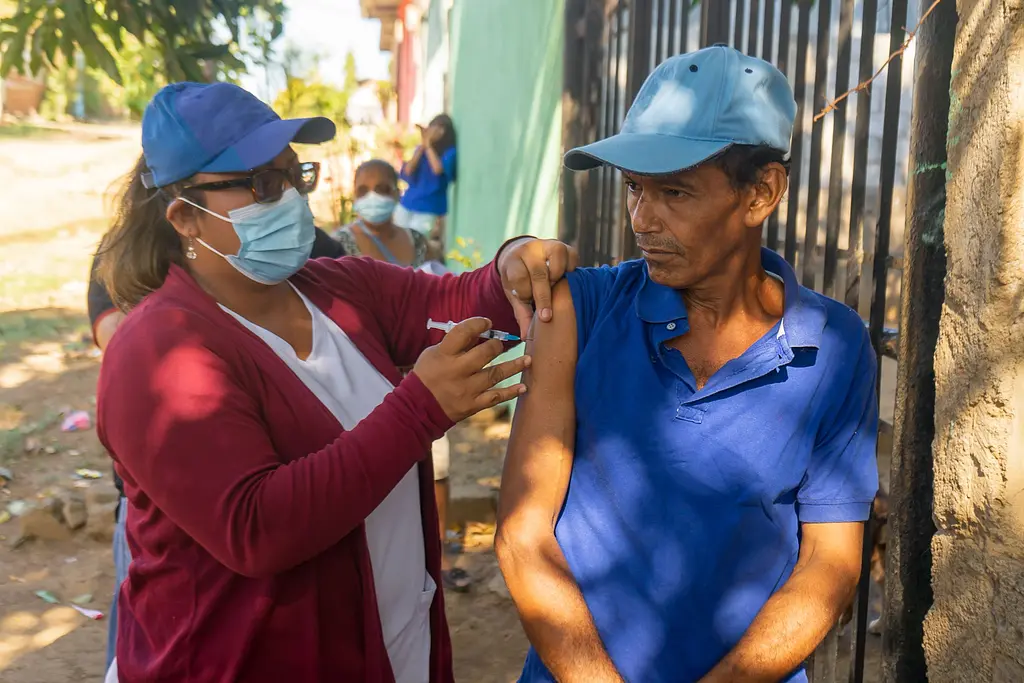Insights
Global Preparedness for Health Threats Remains Weak
In 2023, What Needs to Change to Prevent the Next Pandemic?
At the start of 2020, the immense impact of the novel coronavirus pandemic was unimaginable. Millions of lives were lost, and the widespread effects of the pandemic have been felt in every corner of the world. Three years on, following successive epidemics, one thing is certain: epidemic diseases continue to emerge (and accelerate) yet global, regional, and national systems for preparedness and responses lag.
Recently, at the World Health Organization’s Executive Board meeting, agreement on a pandemic treaty pinpoints the lack of solidarity and equity in response to COVID-19, and the global community’s insufficient protection against health threats as a leading cause of the devastating impact of the pandemic. The draft agreement is a step in the right direction and leads the way for the increased coordination and collaboration needed to face the health threats of today and tomorrow.
The global threat of the next pandemic
In 2022, as new variants of SARS-CoV-2 continued to emerge and global deaths increased despite the availability of effective vaccines; we also saw mpox (monkeypox) spread suddenly and dangerously outside of traditionally endemic settings; an Ebola outbreak, due to the Sudan strain, tested Uganda’s containment plans; and critical infections that had faded into the background of global concern, such as polio, measles, and cholera, resurged in many countries.
At the same time, pandemic diseases such as tuberculosis have resurged and progress against elimination of diseases like malaria—that communities have been tackling for decades—remain stagnant.
Despite this gloomy reality, there is hope for a better future. Below our experts reflect on what they see as priorities for 2023 to improve global health outcomes and strengthen pandemic preparedness.
Breaking the cycle of unequal pandemic preparedness
Last year, COVID-19, Ebola, and mpox all showcased the danger of complacency and underlined the need for health equity in our weak global pandemic preparedness and response systems, shining a light—like years before—that the world is still not prepared to face public health threats.
“After three years of responding to the COVID-19 pandemic, countries are still not well prepared to face health emergencies due to infectious diseases, as recently highlighted by the spread of mpox, says Donal Bisanzio, PhD, DVM, RTI senior epidemiologist and infectious disease expert.
The mpox outbreak is another story of panic and neglect. Public health authorities in wealthier regions struggled to get communities to adopt available interventions to prevent the spread of the disease while endemic countries in West Africa experienced inequitable access to interventions like rapid testing and vaccination to help reduce the burden of this disease, which they have dealt with for decades.
“Many countries’ slowness in reporting the mpox outbreaks have allowed the virus to freely circulate,” says Bisanzio. “The risk communications to raise awareness of the outbreak have caused stigma towards already marginalized groups. Although cases are declining in high-income countries, low- and middle-income countries are still reporting a lot of cases, and these are likely underestimated due to the lack of testing capacity. Moreover, these countries lack access to vaccines due to the rapid increase of costs and the vaccine hoarding actuated by wealthier countries."
In 2023, the global health community’s emphasis should be on removing these health inequities and bringing forth universal health care. That’s where the greatest advancements will emerge in global health security, according to RTI’s Senior Infectious Disease Epidemiologist Pia MacDonald, PhD, MPH, who is also mindful that measuring progress and identifying gaps is needed to maximize targeted approaches.
“We need to zero in on where and who are most at risk and target resources there,” says MacDonald.
Mending the bridge between science and politics
As public health discussions have increased in the daily discourse in the last couple of years, the divide between science and politics has deepened.
The growing lack of mutual respect between science and politics is a major barrier to effective health security systems and a threat to avoiding the next pandemic. Mending the bridge between the two will be a key step towards improving preparedness in 2023 so that health emergencies are rapidly addressed with targeted interventions developed collaboratively between politicians and researchers.
Aligned with this is the “need to focus on risk communications as a frontline intervention,” says Alisha Smith-Arthur, RTI’s Director of Public Health Preparedness and Global Health Security. While risk communications currently play a role in health security measures, it isn’t being maximized on the frontlines of protection against health emergencies, thwarting the effectiveness of other interventions.
In RTI’s work, the solution lies in supporting locally developed interventions from risk communications to vaccines so that communities are using homegrown tools developed by scientists who are neighbors in the community and adopted by politicians who are invested in the communities’ needs.
For example, Smith-Arthur points to the renewed effort to expand vaccine access through a new commitment to markedly increase vaccine manufacturing in Africa as a promising step in the right direction in 2023.
But protecting people from health threats does not just fall on the shoulders of scientists, public health officials and politicians.
“We need an all of society global response to advance this,” says MacDonald. “We need to democratize data so that researchers from various disciplines can become involved in solving the challenges and society can hold politicians and governments accountable.”
Transitioning from reactive to proactive pandemic responses
While containing outbreaks in 2022 relied heavily on the strength and effectiveness of frontline health workers, 2023 needs to usher in a greater focus on preempting health threats to stop them before they take a hold and become epidemics or the next pandemic.
For example, Uganda’s tried-and-true response systems helped them control the 2022 Sudan ebolavirus outbreak within a matter of months, but it still came at a deadly cost and sent parts of the country into crippling lockdowns. New, preventative vaccines could reduce the impact of future outbreak on affected population.
Having an effective vaccine to prevent Ebola is a valuable intervention in itself, but a recent study by Bisanzio et al. also highlighted the importance of proactively utilizing vaccines among key groups, like frontline health workers, in preparation for an outbreak. The study demonstrated that when key population groups were vaccinated before, as opposed to after, a case was identified, Ebola posed less of a threat.
In addition, clear information and rapid, targeted interventions are needed to protect communities against the next pandemic and endemic diseases. While this concept seems obvious, countries have been notoriously susceptible to the cycle of panic and neglect when facing a health emergency, resulting in uncoordinated, slow, and ineffective responses.
Tackling the threat of antimicrobial resistance
Antimicrobial resistance (AMR) continues to grow globally as a silent pandemic but also as a concerning aggravator during other epidemics and pandemics, weakening tools against many health threats, such as tuberculosis.
In the year ahead, we believe strengthening the global collective attention on AMR is a priority. Embedding coordination, communication, and capacity strengthening between the human, animal, and environmental health sectors within national systems, particularly health systems, will be an important way to leverage innovative alternatives to antibiotics and slow the deadly AMR epidemic that is ever growing.
Building resilient health systems before the next pandemic
Standing up permanent systems and practices that focus on detection and response, rather than reactive systems that communities scramble to build after an emergency occurs, is our best protection, emphasized MacDonald. However, this takes “sustained political commitment and funding to grow people, systems, and structures for prevention, detection, and response,” she adds.
“Outbreaks will happen and response to health threats isn’t easy or without unknowns and costs, but if every country can also have effective health security measures, like targeted immunizations systems and disease surveillance systems that prevent and anticipate health threats, then we will really be able to improve the health of all and alleviate the toll of emergencies,” said Bisanzio.
Want to delve further? Click on the links below to see what we are reading and watching as we continually look to improve disease prevention, detection, and treatment.
- Lancet One Health and Global Health Security Series
- Strengthening primary health care is essential to advance health equity
- Global Health Equity Dialogue Series: How Can Health Equity Accelerate Progress toward Universal Health Coverage in Global Settings?
- The New Humanitarian’s Issues Driving Humanitarian Crises in 2023
- Devex’s Planet Health Series
- Lancet: Global Burden of Disease Resource Center
- The Overlooked Pandemic of Antimicrobial Resistance
Learn more about RTI’s work in global health security.
Disclaimer: This piece was written by Pia MacDonald (Senior Director, Applied Public Health Research), Alisha Smith-Arthur (Director, Public Health Preparedness and Global Health Security), and Donal Bisanzio (Senior Epidemiologist) to share perspectives on a topic of interest. Expression of opinions within are those of the author or authors.




